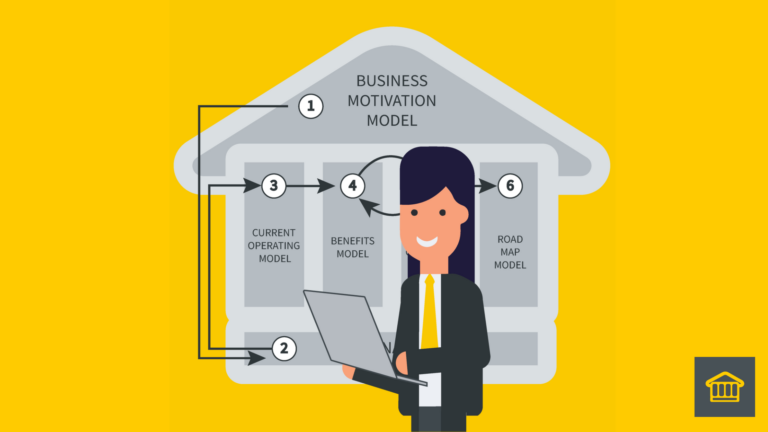To keep up with today’s world, Organisations need to adjust and come up with new ideas all the time. This is very important for service businesses. Customers want services that meet their needs and offer value for money, while employees want systems that allow them to meet and exceed customers’expectations particularly as the environment and competition changes around them. But question is – how do you do that?
In this post, we will answer that. How you do that is via Agile Business Transformation. Specifically, we will discuss the following.
Heres what we’ll cover (click the links to skip to the section below).
NB – Click to expand images 📸
Table of Contents
- Why your company needs Agile Business Transformation
- Why some Agile Business Transformations don’t work
- How Agile Business Transformation can help
- Important Phases in Agile Business Transformation
- What happens in Agile Business Transformation
- How to get started with Agile Business Transformation
This post will guide you on how to use Agile Business Transformation to improve your company and find new opportunities.
You will also learn the common difficulties you’ll face, how they can be avoided, and how to use Agile Business Transformation to adapt in these uncertain times.
Why Your Company Needs Agile Business Transformation
Simply put, Agile Business Transformation makes your business more flexible.
Agile Business Transformation allows you to adapt to the changing demands of consumers and changes in technology. It shows you how you can meet their needs and manage business risks.
Agile Business Transformation is about being ready for change, able to change, and when necessary – changing, and doing it quickly and repeatedly, and often under pressure.
As an example – did you know that large, successful companies like Apple rely on using Agile Business Transformation practices to develop their innovate products loved by their customers?
If you want to see your business do better, then you also need to consider implementing Agile Business Transformation.
The days are long gone where Businesses can ‘set and forget’ the products and services it offers its customers. As a company, you need to be able to adjust to the changing needs of customers and respond to challenges, as mentioned before – quickly and repeatedly.
The current COVERT-19 crisis has highlighted to all companies, change happens fast and almost in a heartbeat – all companies across the world (bar Sweden and a few others) were working from home (I wrote about that WFH and the future of work here).
"The COVID-19 crisis has shown that change happens fast, almost overnight. It's a global shift that underscores the need for agility and adaptability. 🌍🔄 #AgileTransformation #Adaptability #ChangeManagement"
Heath Gascoigne Tweet
Why Agile Business Transformations Fail?
Yes, there’s a chance Agile Business Transformations don’t work because of some common challenges. Here are the top three (3) reasons why:
1. The Organisation Culture
The biggest problem adopting agile business transformation is that people of the organisation dont want to change.
Business Transformations are not an island and don’t happen in isolation. They affect the whole Organisation, meaning – it’s an ‘organisational’ effort. If the employees and management are not in agreement, despite best intentions, it’s never going to happen (well not successfully anyway!)
In order to avoid this, you need your management to ensure all departments across the Organisation work together. This is easier said than done. Most of the time, there are careers, reputations, and empires to defend!
2. Not enough experience with Agile Practices
The second biggest factor – Teams that don’t know (or know enough) about agile practices making it difficult to adopt. This is easily solved however, with some basic training and skilled coaches to make sure that Agile Business Transformation becomes a known and common language with and apart of the organisation.
3. Not enough support from Senior Management
The third factor, and possibly the largest is “lack of support from the guys upstairs”. Yes, those guys.
As alluded to above, every person in the organisation plays a role in the Organisations success (and failure), as they do in the Organisations Agile Business Transformation.
Agile Business Transformation is not something some people do, but not the others. Every person in the organisation needs to be involved, and especially Senior Management.
If your Senior Management aren’t “walking the talk” you best quit now.

DOWNLOAD THE BUSINESS TRANSFORMATION TOOLKIT E-BOOK!
Download the e-book and gain the skills to lead your transformation using the HOBA® Business Transformation Toolkit 👉
"The third factor making Agile Business Transformation challenging? "Lack of support from the guys upstairs." Yes, those guys. 🤷♂️ #AgileTransformation #LeadershipSupport #ChangeManagement"
Heath Gascoigne Tweet
The Right Way to Go Agile
Agile Business Transformation can be very good for your business, but only if it is applied the right way. Here are the top three (3) benefits:
1. Better Control
In the Agile Business Transformation, work is broken into smaller tasks that each add specific business value with an agreed time frame. This way of working makes your organisation more value and time focus – only working on things that add tangible value now, not banking it for the future (because why – the future, as COVERT19 proved uncertain).
You hold regular (but short) meetings to keep work focused and on track, problems are solved, and all the staff are clear on what is expected of them, and what they can expect of others. This approach is exactly what Phillips did to get its higher quality products to the market, quicker.
2. Better Productivity
Projects are completed faster, and since the work is broken down into smaller tasks, it is easier to make changes quickly when needed.
3. Improved Quality (and happier customers)
One of the concept behindAgile Business Transformation is to discover new or untapped ways to improve both the way it operates but also its products and services it offers its customers in an ‘inspect’ and ‘adapt’ fashion.
When dealing with your products and services and how your Customers respond, this ‘inspect and adapt’ approach allows your Business to learn quickly what the customers need and implement those changes and get it out to the Customer again with the new and improved version.
Important Phases in Agile Business Transformation
In terms of phases in implementing Agile Business Transformation approaches and ways of working in your Organisation. They can be summed down to three (3) simple phases.
These phases areincluded in our 6-step Agile Business Transformation framework that has helped many businesses successfully become agile and enjoy the benefits it brings.
Before we explain them, it is important to understand that Agile Business Transformation is not the end goal. It is actually a means to an end. Its goal is to help your business be truly agile (and make money too).
The three (3) phases are as follows:
1. Agile Discovery:
In this phase, your goal is to build the foundations that make Agile Business Transformation successful. Essentially it involves three (3) steps:
- Focus: You need to understand and agree the single outcome your transformation. This is your Vision.
- Control: Since there will be big changes, you need to make sure that everybody knows and agrees with you. Specifically, you need to set the ground rules, your governance framework – how you will manage risk, and control decisions, particularly by whom. You agree this right at the start so everyone in the Organisation is clear on roles and responsibilities.
- Study: this is where you learning about what customers want. A good source for this is customer feedback, surveys and most importantly, complaints and seeing what needs to be improved. You have to see what is wrong with the current system, and how you can fix it.
2. Agile Design:
- In this phase, you decide whether Agile Business Transformation is even a good idea for your Business. You need to see whether the benefits outweigh the effort and expected ROI. You are not asking for a 3-month change, you are asking from your company a new way working and that can be confronting to some!
- Once this is done, you create the design of how you will operate, addressing all the problems in the organisation, and solutions to solve them, how you can get your products and services to market quicker, and meeting and exceeding customer needs, prioritised by ‘business value’, business value agreed by your Team!
Looking for the Upskill and Join the Top 30%? Everything you just read in this post is covered in here plus so much more! 👉
- 30-Day Money-Back Guarantee
- Risk FREE

🤷♂️ "The biggest challenge in Agile Business Transformation? The resistance to change from within. If your senior management isn't fully committed, you're better off not starting'. 🚫🛑 #AgileTransformation #ChangeManagement #LeadershipFail
Heath Gascoigne Tweet
3. Agile Delivery:
This is the main phase, where all your planning is turned into action and you implement Agile Business Transformation. This is where major changes take place. You may have decided to go completely paperless and store digital records.For day to day tasks that require a lot of effort, you might want to useapps and systems that can do them automatically. This known as Business Automation (I wrote about it here).
So, What Happens in the Agile Transformation Journey?
The best way to start any journey is from the top – the ‘top’ of your Organisation that is – with your Senior Leaders and Managers. When your senior management are walking the talk, it is easier to get buy-in from the rest of Organisation as it become ‘good enough for them, good enough with us’.
Senior Management need to be trained in, it not to understand Agile Business Transformation.
The best teams in agile are cross-functional self-organising teams. These are teams that organise themselves around a common goal, and that is the customer in most cases. Team members come from different departments and areas that bring their unique perspectives to the problem or opportunity and develop interesting and innovate ways to addressing them.
Be warned however, the result will not show up immediately. It is process, and that process can be slow.
There might even be small challenges along the way. But over time, the challenges will diminish,and the success will become larger, and ideally last longer (provided you remain agile!).
How to Get Started with Agile Business Transformation
So, there you have it- what is Agile Business Transformation and why it is important. If you want to learn the 6-step Agile Business Transformation framework and blueprint that is trusted by the UK government to setup and turn around their failing business transformations, check out our 6-week Agile Transformation Accelerator program here.
We hope you found tremendous value in it.
Let me know what you think in the comments, and what you would like to see next. Thank you for reading this!
Sincerely,

Heath Gascoigne
P.S. If you want to join our Business Transformator community of like-minded Business Transformators, join the community on the Business Transformator Facebook Group here.
P.P.S. If you want to learn more about business transformation, check out The Business Transformation Playbook here.













